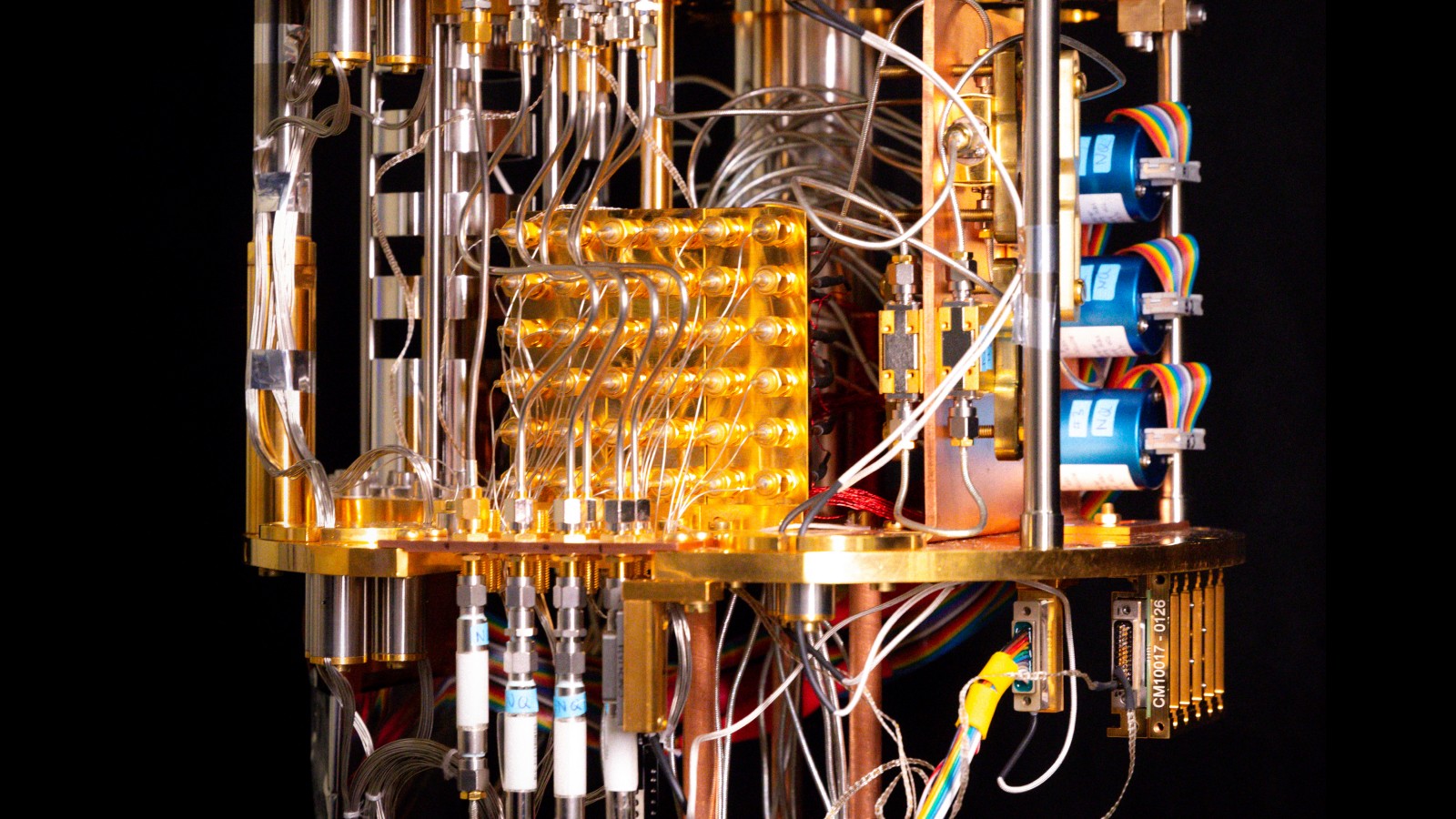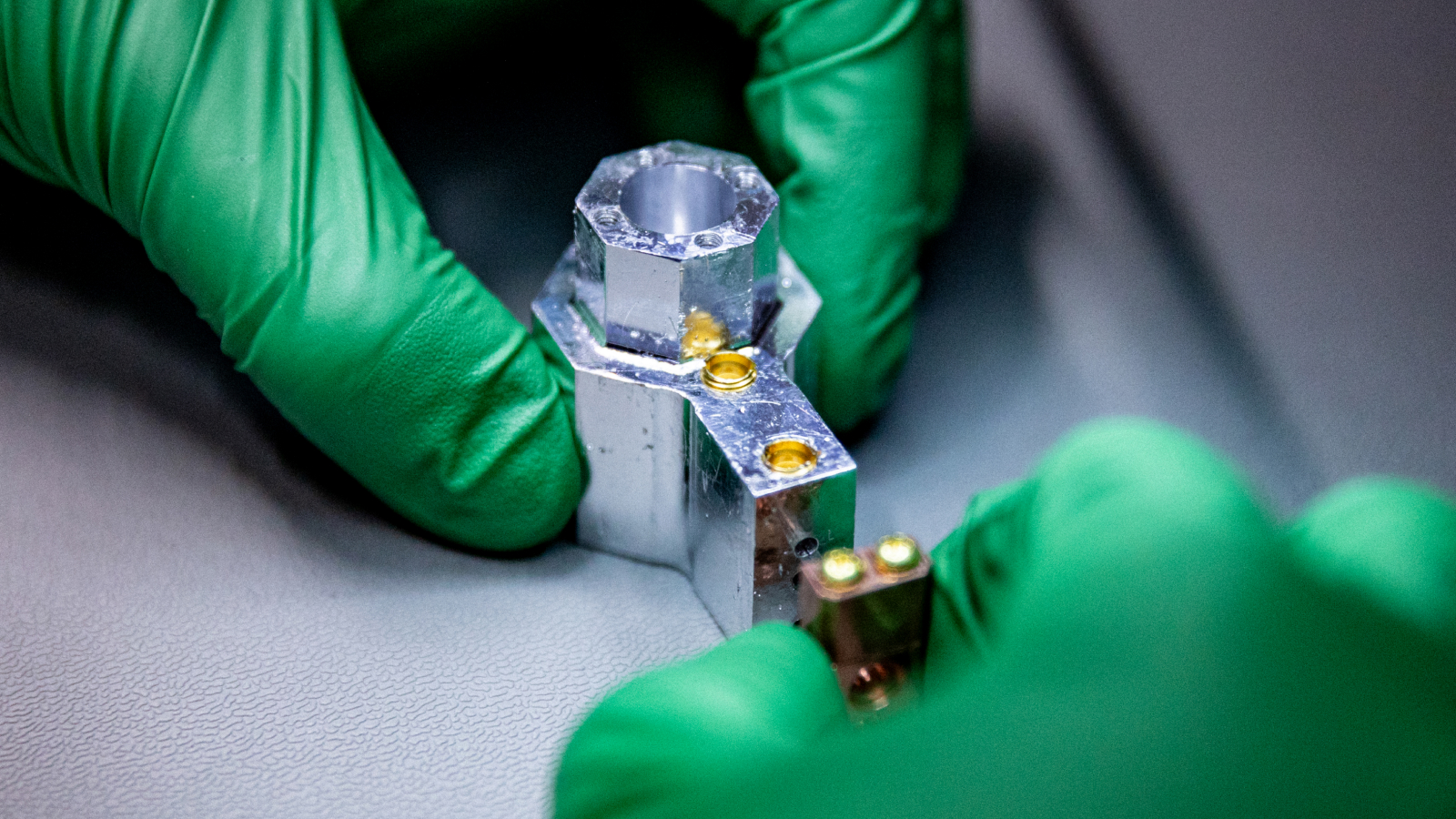Quantum computing breakthrough could happen with just hundreds, not millions, of qubits using new error-correction system
Scientists have designed a physical qubit that behaves as an error-correcting "logical qubit," and now they think they can scale it up to make a useful quantum computer using a few hundred.

Quantum computers that are more powerful than the fastest supercomputers could be closer than experts have predicted, researchers from startup Nord Quantique argue.
That's because the company has built an individual error-correcting physical qubit that could dramatically cut the number of qubits needed to achieve quantum advantage (which is where quantum computers are genuinely useful).
Eventually, this could lead to a machine that achieves quantum supremacy — where a quantum computer is more powerful than classical computers.
Unlike classical bits that encode data as 1 or 0, qubits rely on the laws of quantum mechanics to achieve "coherence" and encode data as a superposition of 1 or 0 — meaning data is encoded in both states simultaneously.
In quantum computers, multiple qubits can be stitched together through quantum entanglement — where qubits can share the same information no matter how far they are separated over time or space — to process calculations in parallel, while classical computers can only process calculations in sequence.
But qubits are "noisy," meaning they are highly prone to interference from their environment, such as changes in temperature, which leads to high error rates. For that reason, they often need to be cooled to near absolute zero, but even then they can still fall into "decoherence" midway through calculations and fail due to external factors.
Related: How could this new type of room-temperature qubit usher in the next phase of quantum computing?
Get the world’s most fascinating discoveries delivered straight to your inbox.
This high error rate means a quantum computer would need to have millions of qubits to achieve quantum supremacy. But today's most powerful quantum computers contain just 1,000 qubits.
This is why research is heavily focused on reducing qubit error rate. One way to reduce errors is by building a "logical qubit," in which several qubits are entangled to behave as one effective, error-free qubit during calculations. This relies on redundancy — a concept in computer science in which the same data is stored in multiple places.
A physical qubit that behaves like a logical qubit
Scientists at Nord Quantique have taken a different approach, instead designing an individual physical qubit, then applying "bosonic codes" during operation to reduce errors at the individual qubit level. They outlined their findings in a study published April 12 in the journal Physical Review Letters. Bosonic codes are error-correcting codes designed specifically for systems that use bosonic modes — such as photons. They exploit bosons' quantum properties to protect information against errors.
Nord Quantique's scientists built one "bosonic qubit," which is around the size of a walnut, from up to 10 microwave photons, or light particles, that resonate in a highly pure superconducting aluminum cavity — which is cooled to near absolute zero.

The bosonic codes were then applied while calculations were underway to correct two types of quantum errors — "bit-flips," or when 0s and 1s are read as each other; and "phase-flips," when the probability of a qubit being either positive or negative is flipped.
Their bosonic codes extended the coherence time of individual qubits by 14%, which the scientists said is the best result to date. Simulations also showed that error correction is not only viable but likely to be stronger when adding additional qubits to the existing single qubit, scientists wrote in their paper.
Using just hundreds of these qubits in a quantum computer could lead to quantum advantage — rather than the millions of qubits scientists have previously thought we would need, study co-author and Nord Quantique's chief technology officer, Julien Camirand Lemyre, told Live Science. The increased qubit lifetime, thanks to the design, coupled with claimed operational clock speeds of up to 1,000 times more than comparable machines, means vastly more calculations can be performed in this short window. It means the "overhead" of redundant qubits is not required versus a machine that uses no error correction or even one with logical qubits.
The race to build a fault-free quantum computer
Other companies, such as Quantinuum and QuEra, are using different approaches to reduce the error rate, but most rely on logical qubits. Lemyre argued his company's approach is better than this "brute force" method.
"Nord Quantique's approach to building qubits involves building the redundancy necessary for error correction directly into the hardware that makes up each physical qubit. So, in a sense we are making physical qubits into logical qubits through a combination of our unique architecture and use of what we call bosonic codes," Lemyre said.
Still, obstacles to quantum supremacy remain. Lemyre noted that larger quantum computers will need "a handful of physical qubits" to correct the few errors the bosonic codes miss.
The company's next step is to finish building a system, expected by Fall of this year, with multiple error-correcting physical qubits. If everything goes to plan, Nord Quantique is hoping to release a quantum computer with about 100 of these qubits by 2028, Lemyre said.

Keumars is the technology editor at Live Science. He has written for a variety of publications including ITPro, The Week Digital, ComputerActive, The Independent, The Observer, Metro and TechRadar Pro. He has worked as a technology journalist for more than five years, having previously held the role of features editor with ITPro. He is an NCTJ-qualified journalist and has a degree in biomedical sciences from Queen Mary, University of London. He's also registered as a foundational chartered manager with the Chartered Management Institute (CMI), having qualified as a Level 3 Team leader with distinction in 2023.


